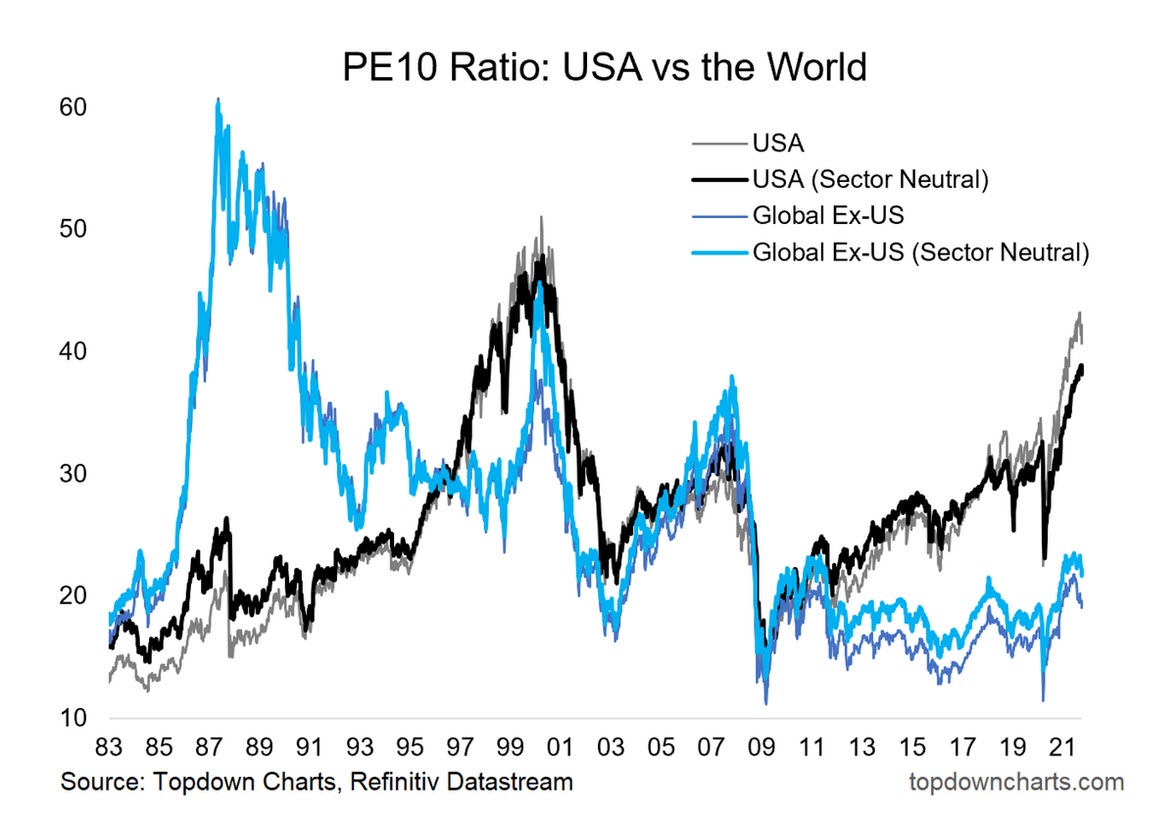-
A significant valuation gap exists between US and ex-US stocks—even after adjusting for sector weight differences
-
"Old Cyclicals" benefitted in September from higher interest rates and rising commodity prices amid signs of a second wave of growth
-
We maintain a multi-year positive outlook on global ex-US equities and forecast its valuation discount to US stocks to narrow
A World Dominated by US Tech
A decade ago, the US equity market was relatively overweight technology-related stocks. Of course, in the years since that's only grown to a major overweight versus ex-US stocks. Today, not only are the top six holdings in the world index all US tech super sector firms, but you also have to drop to the ninth spot to find an international company—Taiwan Semiconductor (NYSE:TSM). (If we assume Alphabet's (NASDAQ:GOOGL) (NASDAQ:GOOG) two share classes to count as one company.)
Sector Shifts
Not surprisingly, there have been significant changes in the composition of the US and ex-US stock markets through the years. In June 2020, we analyzed the foreign equity market from the perspective of its sector weights. A major critique of the supposed relative cheapness of global ex-US markets is that they have a higher proportion of slow-growth sectors, so it intuitively makes sense that they trade with a discount to the high-growth US market.
Leveling the Sector Playing Field
We thought it was time to revisit the analysis. Is the ex-US market still cheap on both an absolute basis and from a sector-neutral approach? Our featured chart displays the valuation of the US stock market and global ex-US stocks. Here’s the twist—we set the sector weights the same. This way, we cut through the natural valuation premiums and discounts that exist among certain sectors.

Attractive International Valuations, But Waiting on Price
The latest Weekly Macro Themes report investigates global ex-US stocks in more detail. We assert that as the market cycle develops, foreign equities should benefit. Internationals’ monster valuation discount will begin to close. Still, we await tactical confirmation and clearer relative strength before upping our conviction level.
Cyclicals Versus Tech
But what could drive relative strength? “Old Cyclicals” (energy, materials, financials, industrials) are a heavy feature of global markets—they make up about half of the ex-US index while those four sectors represent under 30% of the US market. These sectors tend to benefit more than growth sectors—such as tech and health care—during a traditional economic upswing as real activity heats up. A second wave of the recovery should help close the geographical valuation gap.
For perspective, the “Tech Super Sector” (including stocks like Amazon (NASDAQ:AMZN), Alphabet and Tesla (NASDAQ:TSLA), which are not designated in the information technology sector) comprise half of the US index and about one-quarter of the global ex-US market.
What Would Narrow the Gap?
So, if we see tech stumble and old cyclicals move higher, it’s likely that the rest of the world would disproportionately benefit. And we saw this type of price-action in September amid rising interest rates and soaring commodity prices.
Defensives Versus Tech
We’ll also be watching the relative performance of defensive sectors versus tech. Right now, it appears a bottoming process is underway between those two groups. That’s also a positive sign for internationals.
Bottom Line: We have a positive outlook on global ex-US stocks on a multi-year timeframe. While sector differences account for some of the US/non-US valuation gap, foreign equities clearly trade at a discount.
